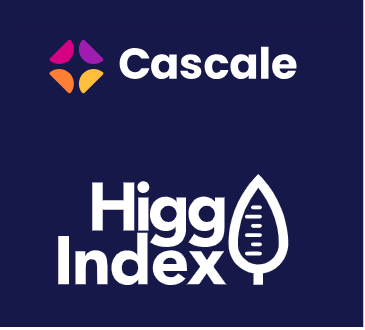
Responsible Chemical Management
Chemicals are part of our daily lives and help make the products we all use and interact with. They can provide beneficial properties and qualities but must be used responsibly by manufacturers to ensure they do not cause harm to humans and the environment.
Many types of chemicals are used throughout the production of our Clothing & Home (C&H) products, for example, chemicals are used to dye or print fabrics.
There is a wide range of legislation, guidelines and safety standards that govern the use of chemicals to ultimately protect customers, workers, and the environment.
We always strive to do the right thing and continually updating our approach to chemical management has always been a top priority.
We were the UK’s first major retailer to launch a chemical compliance policy back in 1998 and we have continued to evolve and improve our chemical management approach since then.
We aspire to eliminate all hazardous chemicals from our C&H supply chain and we are progressively working towards this goal. We want to protect our customers and reassure them that our C&H products are not made using chemicals above the legal recommended limits and guidelines. We also want to do all we can to address the possible impact of chemicals on production workers, local communities, and the environment. To do this, our chemical policy goes beyond traditional approaches which often only apply to chemical restrictions on finished products, to also include chemical restrictions during the manufacturing process.
Our Policy
Compliance to the M&S Environment and Chemical Policy (ECP) is mandatory for all wet processing facilities and all suppliers must comply with the Restricted Chemical Policy
These documents clearly define our expectations regarding the selection and safe handling of chemicals and the management of effluent and waste. It is the responsibility of our suppliers to ensure they are compliant with both our Manufacturing Restricted Substances List (MRSL) and the product Restricted Substances List (RSL) (see below). This is a minimum requirement for overall compliance to our ECP.

We have developed chemical management guidance and best practice for our suppliers on how to implement our Environment and Chemical Policy (ECP), including the Restricted Chemical policy in their facilities.
The M&S Restricted Chemical Policy and M&S ECP clearly define our expectations for the selection and safe handling of chemicals and the management of effluent and waste. It has also been expanded to include other aspects of an environmental management system – energy, air emissions and water
Our ECP refers to best practices which wet processing facilities can adopt to help them move towards a ‘responsible factory’ approach. This policy includes our Minimum Standards and Best practice guidance for wet processing and Environmental Management systems.
Much of our focus has been on apparel and textiles, which makes up the largest proportion of our Clothing & Home offer. However, we also restrict and prohibit what is used in our packaging and Beauty products. We are currently exploring how our ECP approach can be extended to cover all our Clothing & Home products.
We want to be a leader on transparency by being as open as possible on the issues that matter most to our stakeholders. We support the right to know principle and have always tried to be open and transparent – both in the information we make public and in the way we share it. We are committed to continue to track and report annually on our progress towards our chemical commitments and targets on this website and through our Sustainability Report.
We are committed to improving our understanding of how and where chemicals are used in our supply chain and to make our products.
Hazard is the basis for our approach to reviewing chemicals. However, exposure has also been considered to understand where the most urgent and critical actions must be taken. Scientific understanding of the impact of chemicals also continues to evolve.
Our actions are guided by transparency, and fact-based decision-making, and are based on a precautionary and integrated approach to chemicals management. By having a clear picture of the chemicals used in our products, even those not currently covered by legislation, we will be better placed to respond if new chemicals of concern are identified. With thousands of C&H products sold in our stores this is hugely challenging, so we approach this by making our requirements and standards clear to our suppliers.
The main area for chemical exposure is during wet processing. The restricted chemicals mostly likely to be used in these processes are listed in the ZDHC Manufacturing Restricted Substances List (MRSL) and the M&S Restricted Substances List (RSL). We are committed to continuously improving our chemical policy in line with the industry and with the MRSL revisions conducted by ZDHC.
Our Environment & Chemical Policy sets out our expectations on chemical management by suppliers and the actions that should be taken should they identify a non-conformance. Our sourcing offices carry out risk-based due diligence testing of chemical compliance in each of our major sourcing regions against our RSL every season.
We require every wet processor within our supply chain to be disclosed to us, to have read the Environment & Chemical Policy (ECP) and to have fully completed the ECP self-audit prior to any production taking place. We’ve also made our self-audit protocols available in Turkish and Chinese.
Completion and approval of this self-audit is mandatory and is a formal acknowledgement that the factory complies with our ECP requirements. This audit is repeated every 12 months to ensure that our records of factories reflect current best practice and capability.
We believe it's important to focus on delivering clean input chemistry through our MRSL and other tools to ensure our fabrics and textiles are manufactured in an environmentally appropriate way. To aid our suppliers in reducing their environmental impact we engage in several programmes with the Zero Discharge of Hazardous Chemicals Foundation (ZDHC) and Cascale.
Our specialist regional office teams located in the UK, Turkey, India, Sri Lanka, Bangladesh, China, Cambodia, and Vietnam carry out follow-up visits to wet processing facilities during the year to check the validity of information disclosed by our suppliers.
We recognise the positive impact that public data sharing platforms can have on chemicals use. We use the Institute of Public and Environmental Affairs (IPE) platform to upload Pollution Release and Transfer Register data (PRTR) from our Chinese wet processors.
Since July 2017, it has been a mandatory requirement that all our Chinese wet processing facilities must upload their PRTR data onto the IPE website. This represents ~30% of our wet processing sites based on fabric/leather supplier turnover. We don’t use any facilities which have been determined as having significant environmental violations by the Institute of Public and Environmental Affairs (IPE).
This mechanism has now been incorporated into our Dyehouse Audit approval and renewal process so that all Chinese wet processing mills are now required to register and complete all tasks to fulfil all areas in the Corporate Information Transparency Index (CITI).
M&S is committed to extending this public disclosure initiative to other manufacturing regions outside of China and will work with the relevant stakeholders to help provide a suitable data sharing platform (e.g. ZDHC Gateway Wastewater Module).
Our partners
We believe the elimination of hazardous chemicals needs not only collaboration and partnership with our industry peers, but also a holistic and integrated approach,
We’re working with material suppliers, the broader chemical industry, NGOs and other stakeholders to achieve this goal.
To develop our approach to chemicals, we’ve worked with many partners, including Zero Discharge of Hazardous Chemicals (ZDHC), Leather Working Group and Cascale.

Operationally, we’re supported by our suppliers and expert organisations such as specialist consultants, NGOs and independent service providers who are helping us ensure the safety and integrity of our products and to reduce environmental impact within our supply chain.
We joined the Zero Discharge of Hazardous Chemicals (ZDHC) as a Signatory Brand in 2012. The Roadmap to Zero Programme, by ZDHC, leads the fashion industry to eliminate harmful chemicals from its global supply chain by building the foundation for more sustainable manufacturing to protect workers, consumers and our planet’s ecosystems.
We have been a member of Cascale since 2015 and have been awarded Strategic+ membership level due to our high level of engagement in the programme. Cascale’s main area of focus is on developing a standardised supply chain measurement approach for all industry participants to enable them to understand the environmental and social impacts of making and selling their products and services.

ZDHC
As a signatory brand of ZDHC, we are committed to achieving zero discharge of hazardous chemicals from the manufacture of our textile and apparel products.
Zero Discharge of Hazardous Chemicals Foundation (ZDHC) is a collaboration of global fashion brands, chemical suppliers, manufacturers and other organisations that share the same vision and are working together to reduce the fashion industry’s chemical footprint.
The M&S Environmental and Chemical Policy is aligned with the methodology and guidelines established by ZDHC and we are working to implement the key chemical management tools across our wet processing network. The guidelines go beyond the traditional approaches to chemical restrictions which only apply to finished products.
Our Restricted Chemical Policy requires our suppliers to be compliant with the ZDHC Manufacturing Restricted Substances List (the ZDHC MRSL). This covers substances banned from intentional use in any facilities that process textiles, leather, rubber, foam, adhesive and other elements that feed into our Clothing & Home products. All suppliers are required to register on the ZDHC Gateway, giving them access to a database of MRSL- compliant chemistry.
We have adopted the ZDHC Wastewater Guidelines, which provide a unified set of expectations on wastewater quality for the textile and footwear industry that goes beyond regulatory compliance. We require our suppliers to test their wastewater in accordance with these guidelines and monitor compliance as part of their annual ECP Audit.
Our Environmental & Chemical Policy has been updated to align with ZDHC Chemical Management System (CMS). The ZDHC CMS Framework lays out the minimum components of a CMS and the ZDHC CMS Technical Industry Guide covers the implementation of a CMS in the supply chain. Incorporating these guidelines into our own requirements for suppliers ensures we align on a standardised approach to advanced chemical management.
To deliver progress in this area we have updated and rolled out our factory self-audit programme and increased visits to manufacturing sites. We’re also supporting fabric mills to complete the ZDHC Supplier To Zero programme, which guides them towards implementing improved chemicals management in their facility.
Cascale
Cascale brings together 300 leading apparel, footwear, and textile brands, retailers, manufacturers, sourcing agents, service providers, trade associations, NGOs, and academic institutions – all working toward a shared vision of an industry that gives back more than it takes to the planet and its people.
Through multi-stakeholder engagement, Cascale’s mission is to transform business for exponential impact through groundbreaking tools, collaborative partnerships, and trusted leadership for industry sustainability.

To reach this shared vision Cascale have developed the Higg Index, in collaboration with members, to create a global approach for effectively measuring and evaluating the social and environmental impacts of value chains and products.
The tools enable organizations to identify hotspots, improve sustainability performance, save time and money, and engage with value chain partners to scale systemic change across the industry.
At M&S, we use the Higg Index Facility Environmental Module (FEM) as a standard measurement of supply chain sustainability which helps us track improvements in our supply chain environmental performance. Data from the Higg FEM helps to develop our supply chain programmes within our clothing categories and to support supplier partners to reduce the greenhouse gas (GHG) emissions of their facilities. It also helps us to understand complex environmental metrics such as chemical management, air emissions and wastewater.
We have been expanding our Higg FEM program since our first pilot in 2018, now reaching over 90% of our tier 1 suppliers by cost value and over 500 of our tier 2 (fabric) suppliers. We maximise the success of the program by offering in-person and online training to all participating suppliers, helping them to understand the audit content and complete it accurately.
We also encourage facilities to verify their FEM assessment, giving greater confidence in the accuracy of the data. For the FEM2022 audits we exceeded our 50% verification target – data from 76% of tier 1 and 89% of tier 2 supplier partner facilities completing module submissions was independently verified.
Our Sustainability Managers, based in our regional offices, are working with strategic suppliers to deliver environmental management system best practice at facility level. Together they identify improvements in the six key impact areas – energy and greenhouse gas emissions; water use; wastewater; solid waste; air emissions; and chemicals management – and deliver measurable progress through the FEM audit.
We’re not only working with our supplier partners through the SAC. We’re also using the Higg Brand & Retail Module (BRM) to take a closer look at our own approach to social and environmental impact across a wide range of business operations. The BRM provides scores that reflect the maturity of a brand or retailer’s social and environmental policies and processes, from supply chain performance to company operations and logistics. This identifies hotspots for sustainability improvements. We are committed to completing the Higg BRM assessment annually and improving our performance.
The Future of Responsible Chemicals
The dyeing and finishing of fabrics and garments is recognised as being intensive, accounting for a high proportion of the greenhouse gas emissions of the manufacturing process.
This offers a unique opportunity to reduce environmental impact. Both chemical and machinery manufacturers are working on new and innovative solutions to move the industry to more resource-efficient dyeing methods which will reduce impacts such as energy and water use, as well as excluding hazardous chemicals.
Examples that are being scaled include:
- Using cold patch dyeing in place of continuous dyeing – this is a much shorter process and dyes are developed at ambient temperature instead of under steam.
- Substituting pigment dyeing with more natural, tea-based dyes that are produced from iced tea factory waste in Sri Lanka. This process removes the use of synthetic pigment dyes and makes use of a bio-waste product.
- Replacing standard indigo fabric dyes with pre-reduced indigo – this is a cleaner, more resource- efficient alternative, using less water and fewer chemicals during fabric dyeing.
M&S are committed to improving the sustainability of our products by promoting alternative and cleaner technologies and putting the circular economy into practice. This is a bold goal, one which means we need to simplify the materials we use, explore new processes and bring them to scale, help create markets for recycled materials, build partnerships to give products and packaging a second life, and launch new types of business model.
We're also actively involved in a number of industry and multi-stakeholder collaborative initiatives. We were founding members of the Waste & Resources Action Programme's (WRAP) Sustainable Clothing Action Plan (SCAP). We are now active members of the new Textiles 2030 initiative.
| TITLE | DOWNLOADS |
|---|---|
| M&S Environmental & Chemical Policy |
